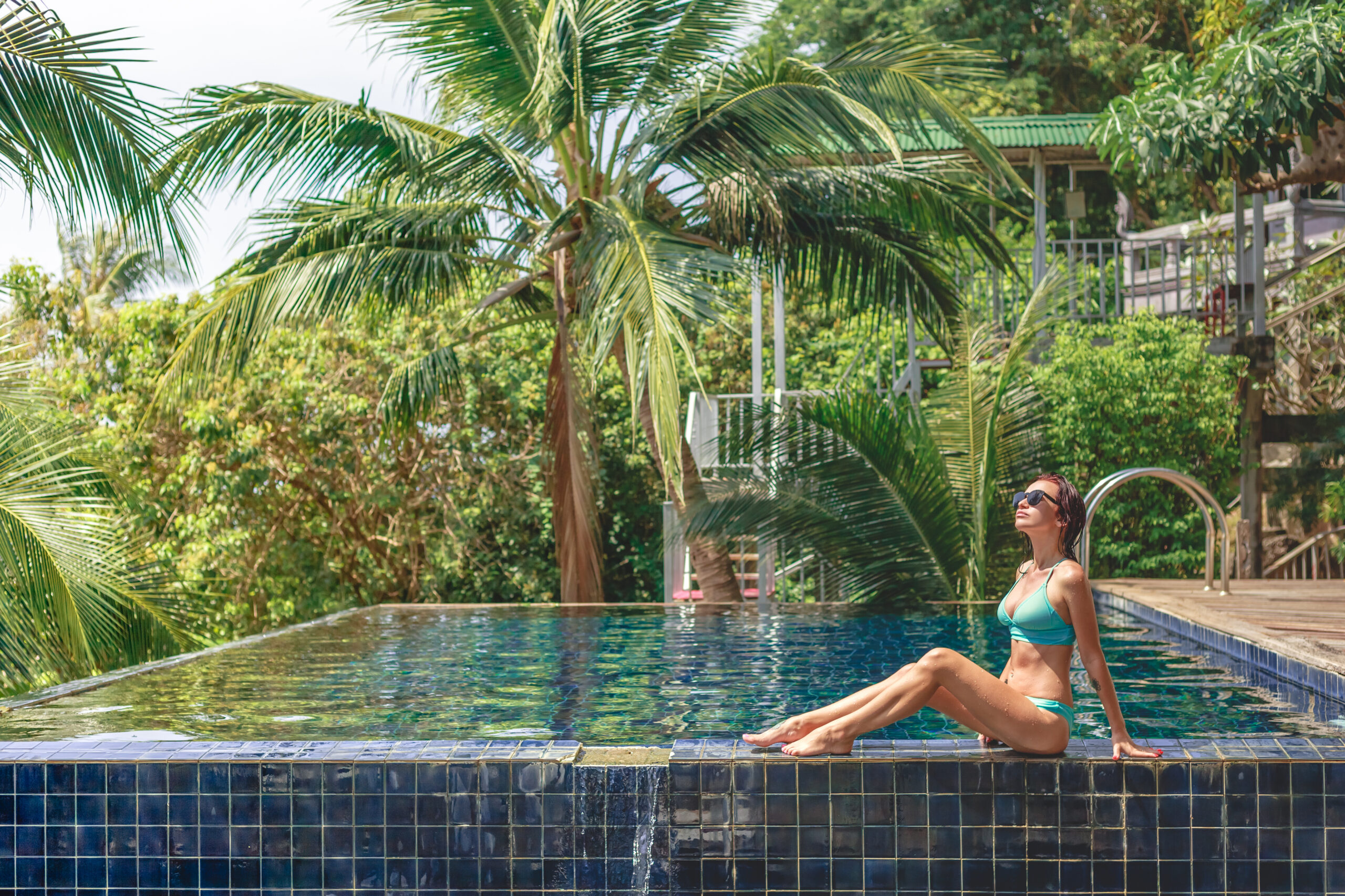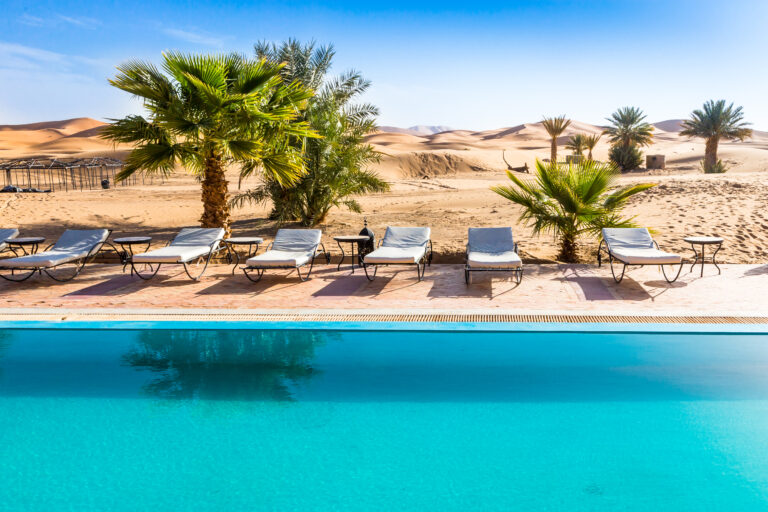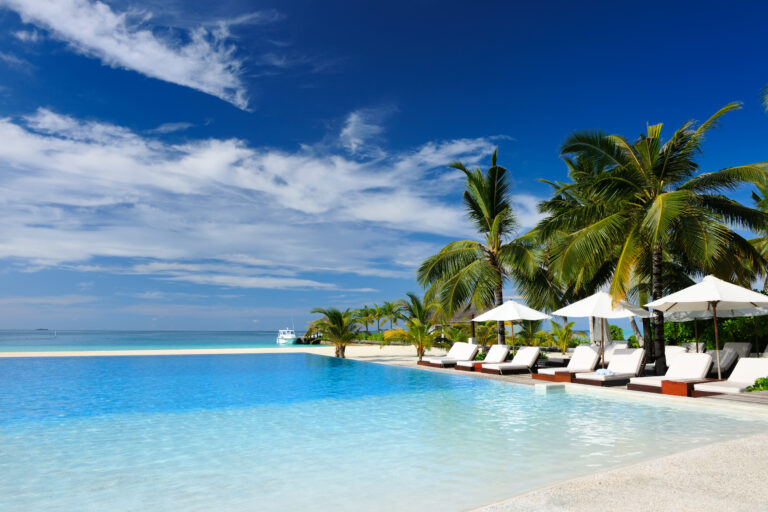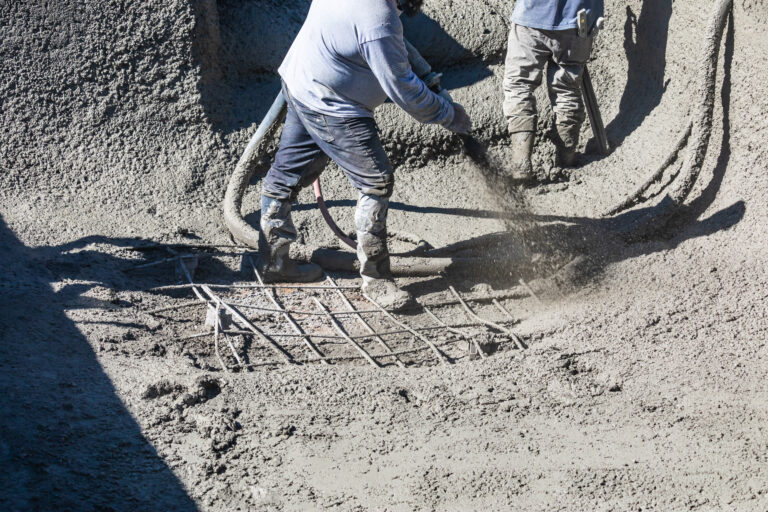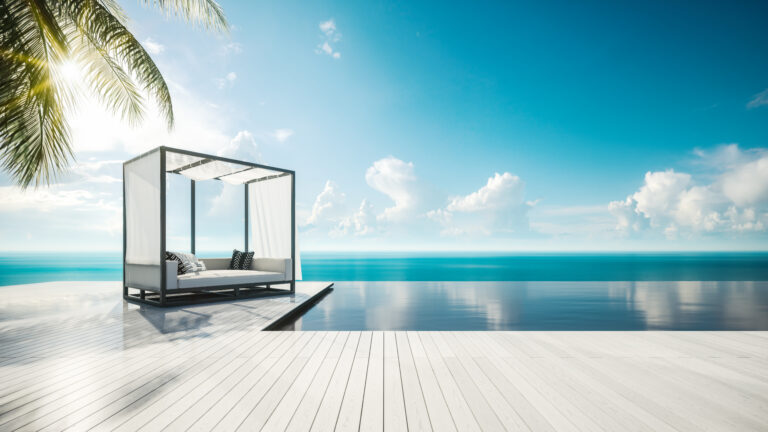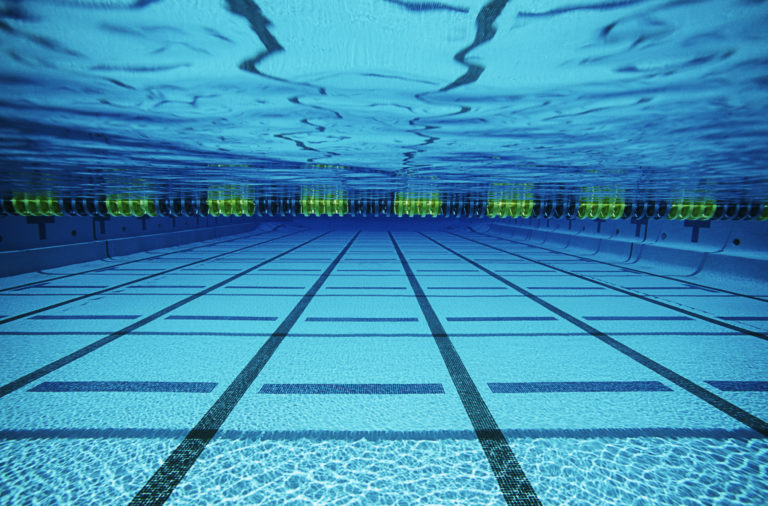Incorporating Natural Elements into Your Pools Design
You’re planning to revamp your pool, aren’t you? Consider incorporating natural elements for a refreshing oasis right in your backyard.
It’s not just about aesthetics; it’s also about creating a harmonious environment that stimulates relaxation.
Dive into this article and discover how rocks, plants, and water features can transform your pool into a serene sanctuary.
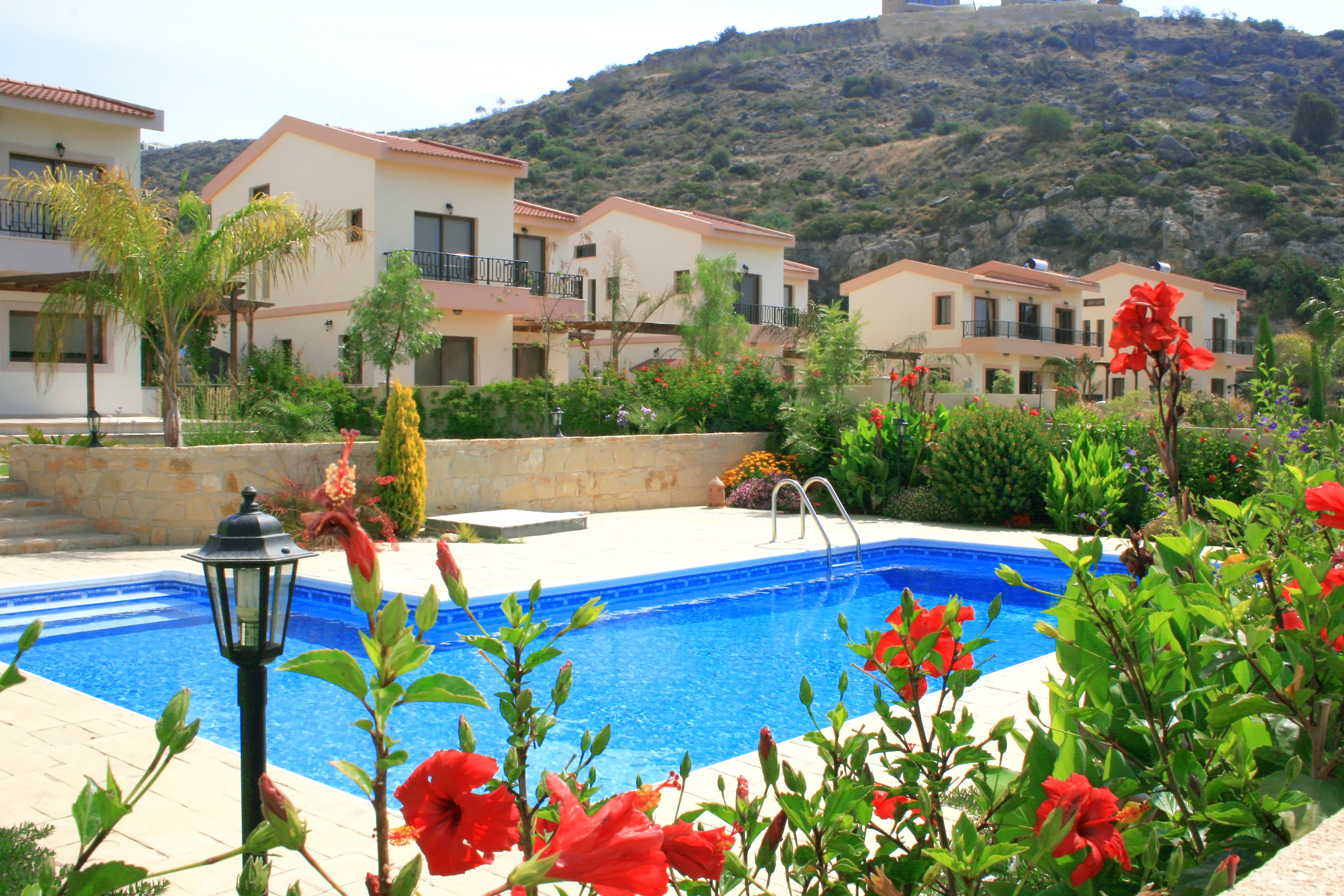
You’ll also find maintenance tips to keep it looking pristine.
Let’s enhance your outdoor living space together!
The Importance of Natural Elements in Pool Design
There’s no denying how crucial natural elements are in enhancing your pool’s overall design. They bring an organic touch to your backyard oasis, making it more inviting and relaxing. But there’s more to it than aesthetics alone.
Incorporating eco-friendly materials into your pool design not only contributes to the environment but also adds value to your home. You’re going green, reducing carbon footprint, and simultaneously creating a luxurious space for relaxation.
Wooden decking, pebble finishes or natural stone pavers can dramatically transform the look of your pool while being kind to Mother Earth. These materials are sustainable, durable, require less maintenance compared to traditional ones and they blend seamlessly with nature.
Now, let’s talk about the biophilic benefits of using natural elements in your pool design. Biophilia is our innate connection with nature and incorporating this concept into your pool area can boost well-being significantly. Imagine swimming surrounded by lush plants or under a sky full of stars! It reduces stress levels, improves mood and concentration. So don’t underestimate the power of that calming waterfall feature or those vibrant aquatic plants around your pool-they’re doing you good on many levels!
Selecting the Right Natural Elements for Your Pool
You’ve understood the importance of incorporating natural elements into your pool’s design, now let’s dive into how to select the right ones.
We’ll explore how to choose pool-friendly plants that won’t harm your water chemistry or clog your filters.
We’ll also offer tips for selecting stones that can withstand constant exposure to water and chemicals.
Additionally, we’ll provide some inspiring waterfall design ideas.
Choosing Pool-Friendly Plants
When it’s time to pick out plants for your pool area, you’ll want to consider species that are pool-friendly and able to withstand the local climate. Plant durability considerations must be a priority as these plants will face harsh conditions such as high heat, intense sunlight, and chlorine exposure.
Aquatic vegetation options could also enhance your pool’s natural appeal. Here’re some suggestions:
– Canna Lilies: Known for their durability and vibrant colors.
– Creeping Jenny: As an aquatic plant, it grows well near water.
– Papyrus: It tolerates wet soils and can bring an exotic touch.
– Bird of Paradise: Resistant to most pests, thrives in full sun.
– Agave: A desert plant perfect for pools in hot climates.
Choosing the right combination will ensure a beautiful yet resilient pool landscape.
Stone Selection Tips
Now let’s turn our attention to picking out the right stones for your pool area, which is just as crucial as choosing plants. You’re looking for a balance between stone durability and aesthetic appeal. It’s not enough that it looks good; it should also withstand constant exposure to water and foot traffic.
Here’s a quick guide:
| Stones | Durability & Aesthetic Appeal |
| Granite | Highly durable, offers a variety of colors |
| Slate | Durable with unique textures and color variations |
| Travertine | Less durable but provides an elegant look |
| Sandstone | Soft stone, gives a beach-like feel |
Waterfall Design Ideas
Let’s dive into some waterfall design ideas for your pool area that’ll really make a splash. Consider adding waterfall lighting to illuminate your nighttime swims. Strategically placed lights can highlight the cascading water, creating a mesmerizing display that adds another level of ambiance in your backyard oasis.
Now, let’s talk about colorful koi incorporation. Imagine gazing at these vibrant creatures darting around under a gently falling waterfall – it’s not just visually stunning but also brings a sense of tranquility and connection with nature.
You’ve got to think about suitable plants too, they aren’t just decorative but also provide essential shade for the koi.
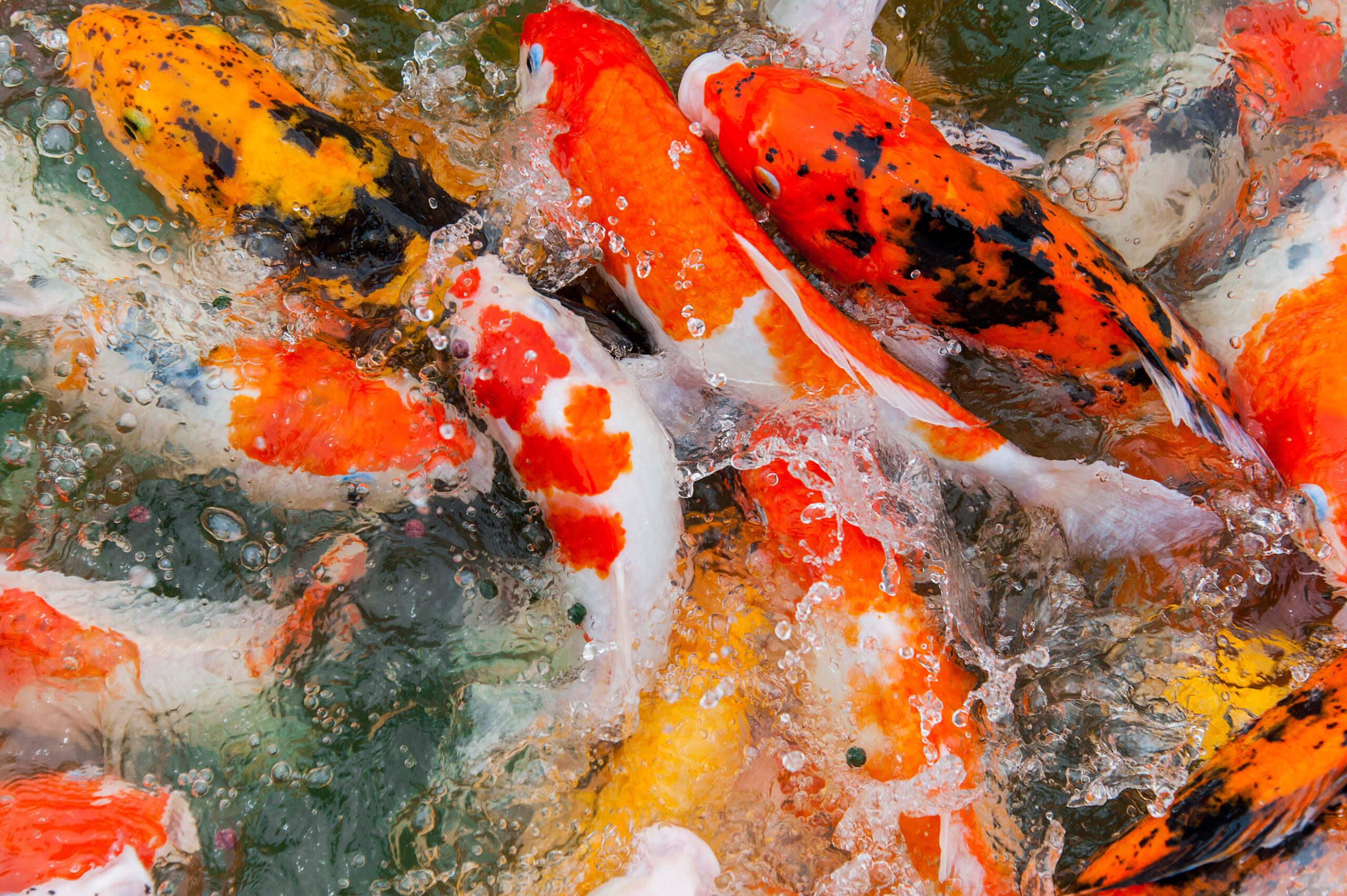
The Role of Plant Life in Pool Design
Incorporating plant life into your pool design isn’t just about aesthetics; it’s also instrumental in creating a natural, relaxing environment. Think about the atmosphere you want to create and how you can use plants to achieve it.
1. Plant color coordination: This is more than simply choosing attractive colors. It’s about developing a harmonious palette that complements your pool and its surroundings. You might go for a tropical vibe with vibrant greens and exotic flowers, or perhaps a calming desert scene with succulents.
2. Underwater vegetation possibilities: These can add an extra layer of intrigue to your pool design. Aquatic plants not only provide visual interest but can help keep the water clean too.
3. Height variety: Incorporating both tall trees for shade and lower-growing shrubs adds depth and dimension to your pool area.
4. Seasonal considerations: Choose plants that will look good year-round so your pool remains visually appealing no matter the season.
Incorporating Rocks and Stones Into Your Pool Landscape
You’re about to embark on a journey exploring the art of incorporating rocks and stones into your pool landscape. It’s not just about randomly throwing in some rocks; it involves the careful selection of rock types that complement your existing design and precise stone placement strategies for maximum visual impact.
So let’s delve deeper into these fascinating aspects, enhancing your pool area, taking its aesthetics and functionality to the next level.
Rock Types Selection”
Choosing the right type of rocks can really enhance your pool’s natural aesthetic. It’s not just about picking any stones, but considering rock durability and geological aesthetics. Remember, you’re creating a long-lasting, visually appealing environment for everyone to enjoy.
When selecting rocks, consider these factors:
– Hardness: Some rocks withstand weather conditions better than others.
– Color: Choose colors that complement your surroundings and water color.
– Texture: Smooth or rough? This influences appearance and safety.
– Size: Big boulders create focal points while smaller stones compliment plants.
You’re not just choosing rocks; you’re curating an experience. So take your time, keep these tips in mind, and turn your pool into a geological masterpiece!
Stone Placement Strategies
It’s important to strategize about where you’ll place your chosen stones to achieve the best visual impact. Consider stone color coordination, as it plays a significant role in enhancing the overall aesthetic of your pool. For instance, lighter stones can give an illusion of more space while darker ones provide depth and intrigue.
Next up are stone arrangement techniques. Random placement might seem easy but it wouldn’t give the beautiful finish that strategic placement does. You could arrange by size, with bigger boulders as focal points and smaller pebbles filling in spaces or line them up along the walls for a tiered effect.
Utilizing Water Features for a Natural Feel
Incorporating water features like cascading waterfalls or bubbling fountains can definitely give your pool a more natural feel. Not only do they add to the water feature aesthetics, but they also provide eco-friendly considerations; the sound of running water can be soothing and it’s a great way to keep the pool’s water circulating.
Considerations when selecting the right type of waterfall or fountain for your pool include style, maintenance requirements and impact on wildlife. Here’s a quick comparison:
| Water Feature | Aesthetics Impact | Eco-Friendly Considerations |
| Waterfall | High | Medium |
| Fountain | Medium | High |
| Bubbling Rock | Low | High |
| Spillover Spa | High | Low |
Remember, what works best for you depends on your personal preferences and environmental concerns. Also, consider energy-efficient pumps to reduce electricity usage while maintaining an attractive display.
Ultimately, you’re not just enhancing your pool’s look – you’re creating an environment that blends seamlessly with nature. So go ahead, explore these options and find what suits your taste best.
Blending the Pool With the Surrounding Environment
You’ll need to consider the overall landscape and architecture of your home when blending the pool with its surrounding environment. This process not only enhances aesthetic appeal but also promotes eco-friendly designs.
1. Garden integration: Integrate your pool area with existing gardens or create new ones that complement the pool’s shape and color. Adding native plants can enhance this natural feel while reducing maintenance needs.
2. Water features: Add waterfalls, fountains, or streams to make your pool area more dynamic and blend seamlessly into the natural environment.
3. Pool lighting options: Opt for LED lights that mimic natural light patterns – they’re energy-efficient too! You could even look into solar-powered lights for an extra eco-friendly touch.
With these steps in mind, you’re on your way to creating a stunning and harmonious backyard oasis that not only looks good but is environmentally conscious too! By integrating your pool with its surroundings using natural elements, you’ll create a tranquil space where everyone will love spending time.
Maintenance Tips for Pools With Natural Elements
Maintaining a pool that’s integrated with the surrounding environment can be a bit tricky, but don’t worry, we’ve got some handy tips to help you out.
First up is natural element cleaning. You see, pools with natural elements such as rocks and plants may require more attention than typical pools without these features. Debris from these elements can easily get into your pool, causing potential blockages. It’s best to use a leaf skimmer daily to keep the surface of your pool clean.
Next, pay attention to seasonal adjustments. Weather changes can affect your pool’s balance in different ways, especially if it’s surrounded by lots of trees or foliage. For instance, autumn leaves falling into your pool could alter its pH levels – which isn’t good news for you or any potential swimmers! So make sure to check and adjust your pool’s chemicals regularly throughout each season.
Remember: maintaining a naturally integrated pool takes dedication – but it doesn’t have to be hard work! With regular cleaning and seasonal adjustments in mind, you’ll keep that inviting oasis looking pristine all year round.
Case Studies: Successful Incorporation of Natural Elements in Pool Design
Now that you’re well-versed with the maintenance tips for pools incorporated with natural elements, it’s time to delve deeper into the practical side of things. Let’s take a look at some successful case studies where the incorporation of natural elements in pool design has been executed beautifully.
Biophilic design benefits aren’t just limited to aesthetic appeal; they extend much further. You might be wondering how these designs bring about an eco-friendly shift. Using eco-friendly materials is one significant way this is achieved. Not only do they promote sustainability, but they also blend seamlessly into any design, enhancing its overall appeal.
Here are a few instances where biophilic designs have worked wonders:
– The Mossman Gorge Centre in Australia: This center features an outdoor swimming pool surrounded by native plants and rocks.
– A residential home in California: This house showcases a beautiful backyard pool complemented by natural stone and lush greenery.
– The Banyan Tree Mayakoba in Mexico: Here, you can find a stunning example of a naturally inspired infinity pool.
– A farmhouse in Tuscany: The swimming pool here is crafted from local stones, promoting sustainability while maintaining an authentic rustic charm.
Seeing these examples can inspire your own pool’s design journey towards more nature-centric choices.
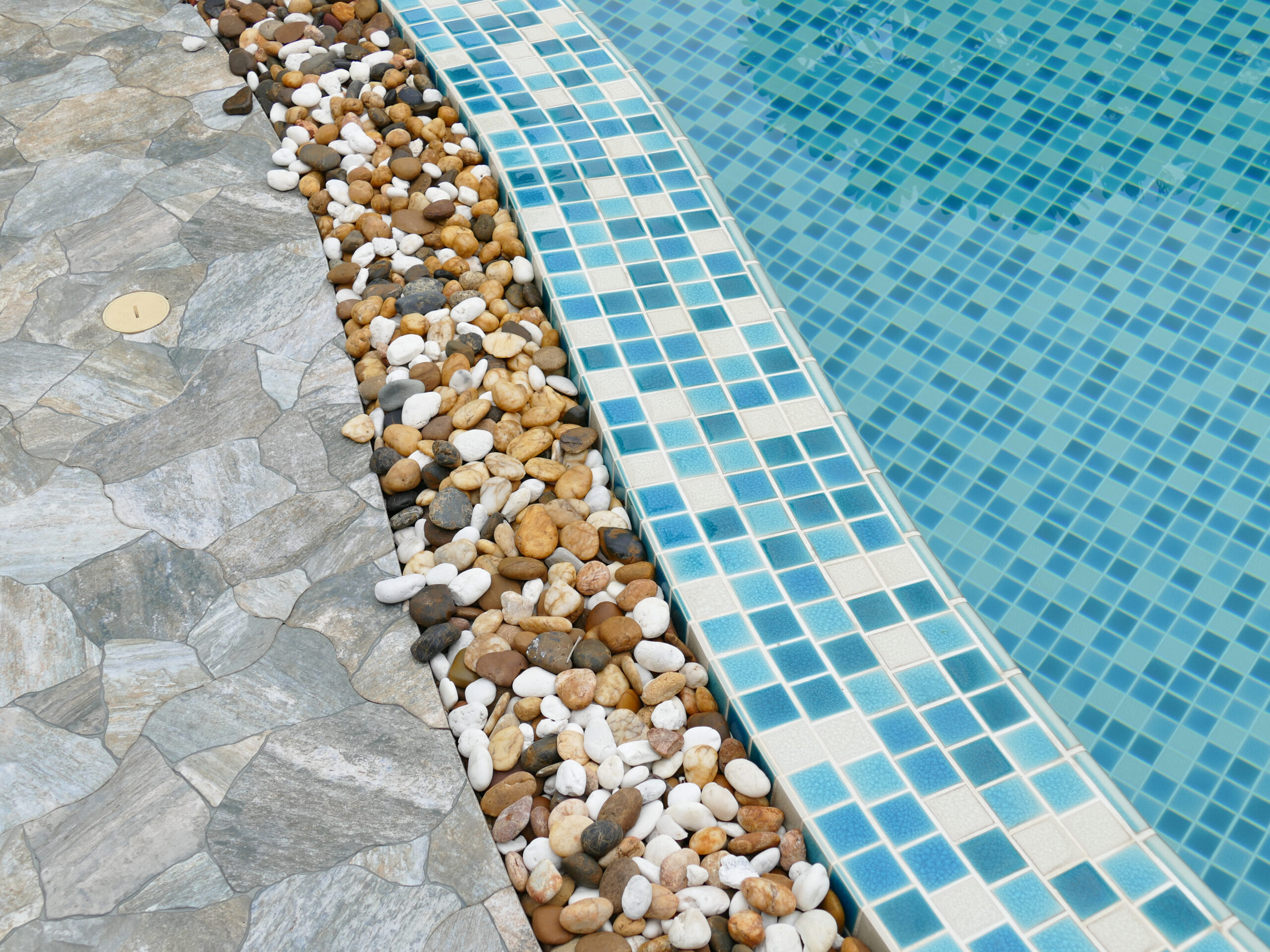
Frequently Asked Questions
What Are the Cost Implications of Incorporating Natural Elements Into My Pool’s Design?
Incorporating natural elements may increase your initial costs, but it’ll lower long-term maintenance expenses. You’ll save on chemicals with eco-friendly benefits and reduce natural element maintenance. It’s an investment worth considering.
How Can Natural Elements Impact the Safety of My Pool?
Natural elements can enhance your pool’s safety. Natural filtration systems reduce chemical use, promoting healthier swimming. Eco-friendly materials offer non-slip surfaces, reducing accidents. Always remember, correct design and installation are critical for safety purposes.
How Can I Incorporate Natural Elements if I Have a Small Pool Area?
Even with a small pool area, you can still incorporate natural elements. Use smart small space landscaping, like vertical gardens or compact plants. Add compact pool features such as rocks or miniature waterfalls for added aesthetics.
Are There Specific Types of Natural Elements That Work Better for Saltwater Pools?
Yes, certain natural elements work better for saltwater pools. Saltwater flora like seagrasses and mangroves thrive in such environments. Also consider material compatibility; use rocks and stones that can withstand saltwater conditions.
Can Incorporating Natural Elements Affect the Longevity or Durability of My Pool?
Sure, adding elemental aesthetics can affect your pool’s longevity. Certain natural materials might erode over time due to environmental impact, potentially damaging your pool’s structure. It’s key to choose durable, weather-resistant elements.

